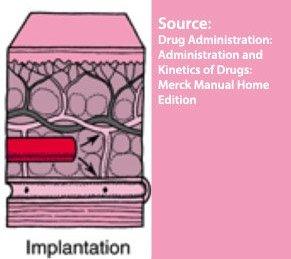
This article was co-authored by Dhwani Rupani, Dhruvika Chawalla, Malhar Khakharia, Vidhi Khanna
A multipurpose system consisting of an anti-inflammatory agent, Magnetic Resonance Imaging (MRI) contrast and an implantable glucose biosensor has been developed by Abhijeet Joshi of National Institute of Pharmaceutical Education and Research, Ahmedabad and others at IIT Bombay, Mumbai. Presently available implantable systems for glucose monitoring have low accuracy and low reliability. Additionally they incite host immune and tissue responses leading to inflammation and dense fibrotic tissue formation that interfere with their functioning. To overcome these pitfalls, the novel device comprises of Glucose Oxidase enzyme along with Rudpp-an oxygen sensitive dye to detect glucose, Diclofenac sodium-an anti inflammatory agent to prevent fibrotic tissue formation and iron oxide magnetic nanoparticles that act as the MRI contrast agents to help localise the device. The most outstanding character of this system is the simultaneous, accurate yet separate and independent functioning of each component. Glucose Oxidase (GOx), present in the system, catalyses the conversion of glucose and oxygen to pyruvate and hydrogen peroxide.
Glucose+Oxygen —-(GOx) — — > Pyruvate + Hydrogen Peroxide
Change in oxygen concentration is detected by the oxygen sensitive dye Rudpp. Rudpp fluoresces normally but in the presence of oxygen, the dye is quenched. Utilization of oxygen by GOx in the microenvironment of the body lowers the oxygen concentration, in turn increasing fluorescence. This visual change in fluorescence is used as a measure of the glucose concentration. Think of a tattoo that glows when glucose levels are high! Diclofenac is added to the system to suppress host immune reactions that have been a hindrance for available implantable devices. The need to monitor implants from time to time prompted the addition of iron oxide nanoparticles (coated with citrate to provide stability) that act as good contrast agents for MRI. This triple function system is held together in polymeric alginate microspheres. The loaded alginate microspheres are prepared using a droplet generator from a suspension of the components sprayed into its cross linker- calcium chloride.
The novel system was subjected to various analytical procedures in order to determine its characteristics, functionality, effects, etc. Particle size characterization and its correlation with the rapid release of the drug (burst release) from the microspheres showed that particle size was inversely proportional to burst release. Compared to the ‘Smart Tattoo’ biosensor which has a sensitivity of 0.52%/mM of glucose, the newly developed system showed sensitivity six times higher in 0 – 10mM concentration ranges. The iron oxide nanoparticles showed good imaging properties when tested. Cytotoxicity studies revealed that the microspheres were not harmful to cells. Detailed study of various parameters in this research is commendable and gives a comprehensive view of the work done to the reader. However, few questions remain unanswered such as the long term toxicity of the components, the fate of sodium alginate microspheres in the body, route of administration of the device and the effect of changing oxygen concentrations in vivo irrespective of GOx.
It can be hypothesized from this research that the use of such devices could extend far beyond glucose monitoring. Various important metabolites could be measured if other enzymes that cause change in oxygen levels are considered, or other diseases could be targeted if the drug present in the system is changed. As a stepping stone, we hope that the research done by Abhijeet Joshi et al is taken forward and an in vivo device to constantly, non-invasively monitor glucose is developed, so we can finally bid adieu to the age old finger-prick method for glucose monitoring.